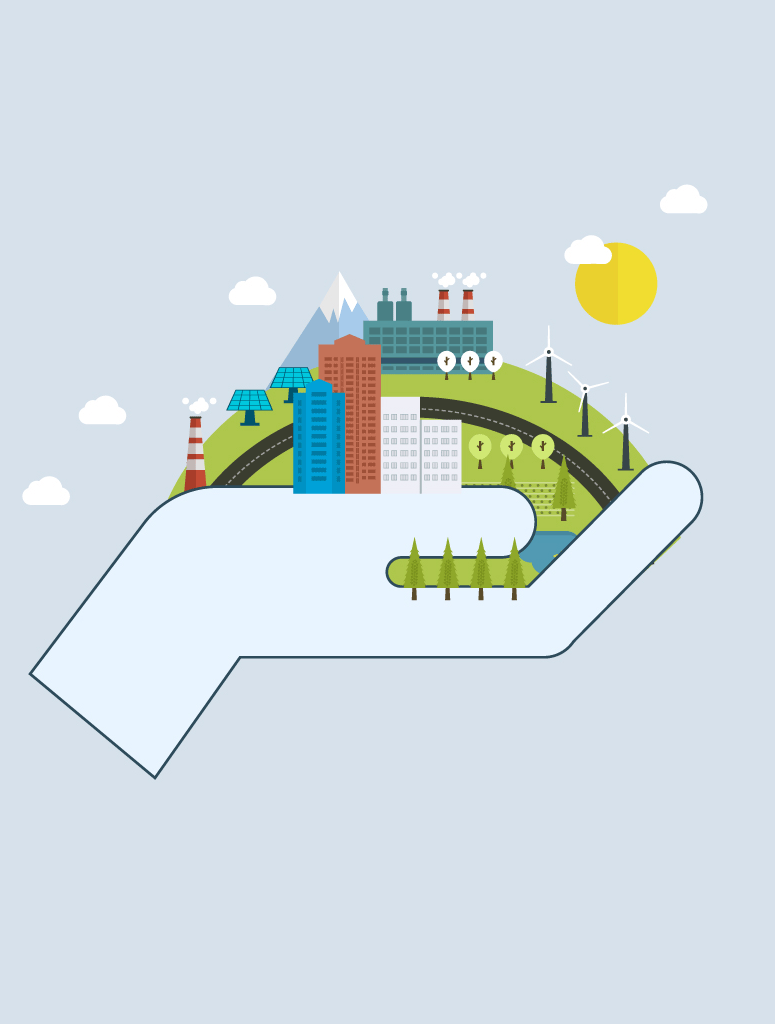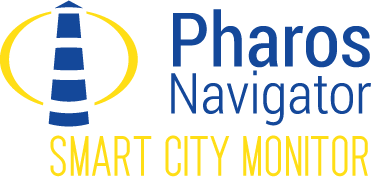Unique digital urban model for each city

Digital Twin running Urban Model of a city as complex cyber-physical system
The cool thing you can do with Smart City Monitor running is that it fosters digital transformation of the common middle-size cities into the Smart Cities in cost-effective way as step-by-step process. The Urban model is a virtual copy of the real big cyber-physical system of particular city and it runs on the Smart City Monitor engine as the Digital Twin of the city having connections to all necesary city data sources that provide instant information about ongoing urban processes. The Digital Twin calculates and transforms multiple data streams into diverse information services andcontrols in real time. Human friendly, easy to understand, instant information the helps to all citizens, tourists, visitors and businesses to live, work, walk, move in the city becomes available online improving Quality of Life, Economic growth, city image and its budget. Special applications for the citisens, tourists, city administrations and utility service providers foster sustainable and effective management or urban processes in the interests of the whole community.
The practical implementation of the urban model middle size cities and towns requires innovative vision, knowledge of local urban processes and certain skills that significantly improve admisnitartio capacity to deal with complexity of urban developments.
The urban model 37120 provides the city administrations and utility providers with quick and easy turn-key solution to launch integrated view of Smart City in compliance to international standard ISO 37120 “Sustainable development of communities — Indicators for city services and quality of life” for all theme-objects and core indicators. It helps getting necessary experience including preparing and connecting the model to Open Data sources.
Further advancing of the Smart City Model can be realized accordingly to the city infrastructure and development plan. The model allows gradual step-by-step upgrading to include all necessary city properties such as maps, geographic locations of the objects, mapping of the districts, integrating performance information of objects into overall performance of the districts and the whole city, considering development plans and targets, adding new open data sources, policies. When the model is available and runs on evidence data it can effectively support planning, simulation of major policy making decisions and evaluation of risks.
In particular the Smart Sustainable City Model implementation can foster and utilize
- Implementation of various smart digital components in different geo-locations, districts (environment, energy, water, waste, transportation, etc) for data and measurements collection
- Use of wide area networks, short range communication, access to smart technologies at lower cost, energy efficiency
- Innovative components in Internet including optical networks, greener infrastructure, broadband equipment for both fixed and mobile networks, network resource management, radio technologies, scalability, cost efficiency, quality of service
- New methods of Smart Governance and future business models with high citizens participation, improved urban culture, E-health, energy-friendly solutions, digital homes, enterprises, schools, transport, horizontal services for all city stakeholders.
- New ways of presenting citizens and administration complex big data in the easy understandable user friendly way
- Multiple data sources inclduing IoT, sensors, smart meters and automated systems usingh LoraWan, cable, Bluetooth mesh 5.0 BLE, 5G and other networks.
Smart Intelligent Objects in the Smart City
Provided by sensors, Internet of Things (IoT) devices and edge and fog computing, the implemnation of city Digital Twin can include all major city objects both moving and stationary ones becoming the Smart Objects. They are capable to receive, process, exchange and reveal quantitative information about their current state, operating conditions and realize necessary controls to optimize performance of both the object and the whole City over common networks.
Such Smart Object allows for example as follows:
- Decreasing light intensity on streets during the night in case there is no traffic or movements in pedestrian areas to save energy,
- Measuring and making water consumption adjustable to local area conditions defined centrally in the central city server
- Monitoring real time passenger transportation such as busses, trains and regulating its intensity to address current density of passenger traffic in some routes and locations in near real time
- Calculating and presenting expected time of next arrival of bus, train, etc based on actual data from the bus/train as Smart Object
- Switching on cameras or making pictures in case there are moving objects above of normal speed of pedestrians i.e. running (normal speed range between 0-5 km/h)
- Switching on additional cameras or make pictures in particular location of the city where there is expected or unexpected event takes place (fire, explosion, sewage problem, crowd gathering, extraterrestrial/magical ...., etc)
- Measuring combinations of environmental data, noise, high frequency emissions of various types, etc. providing integrated view for possible harmful impacts
- Calculating and presenting current number of visitors in particular public places vs. its maximum capacity, e.g. parking slots, seats in restaurants, cinema, etc.
2024 © GOLEM IMS GMBH, Austria. ALL Rights Reserved.
Terms of Service |
Privacy Policy
Made in Austria

